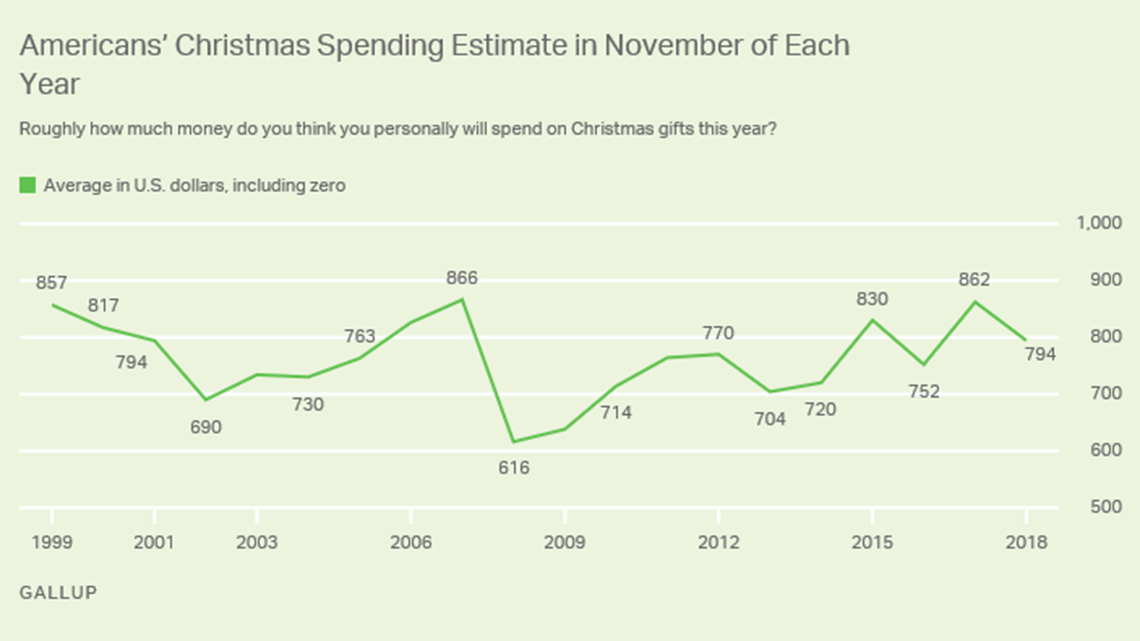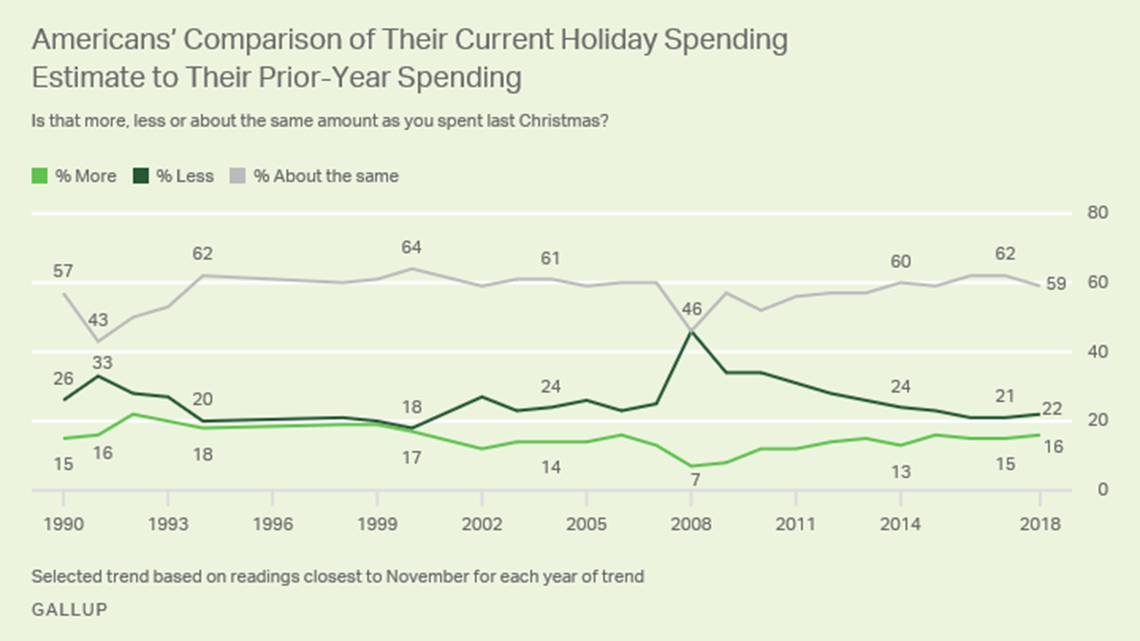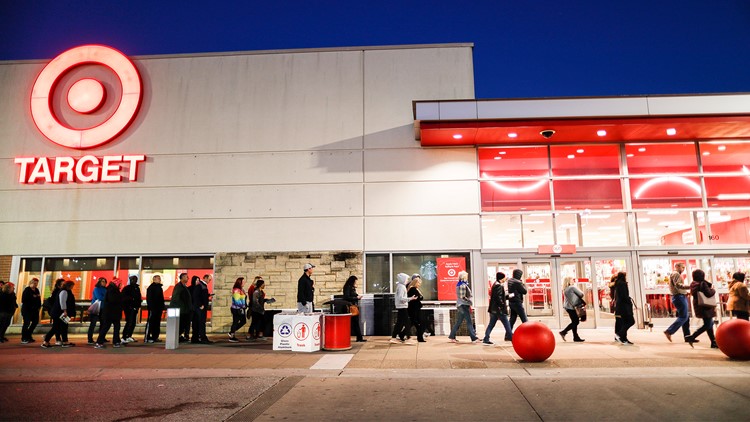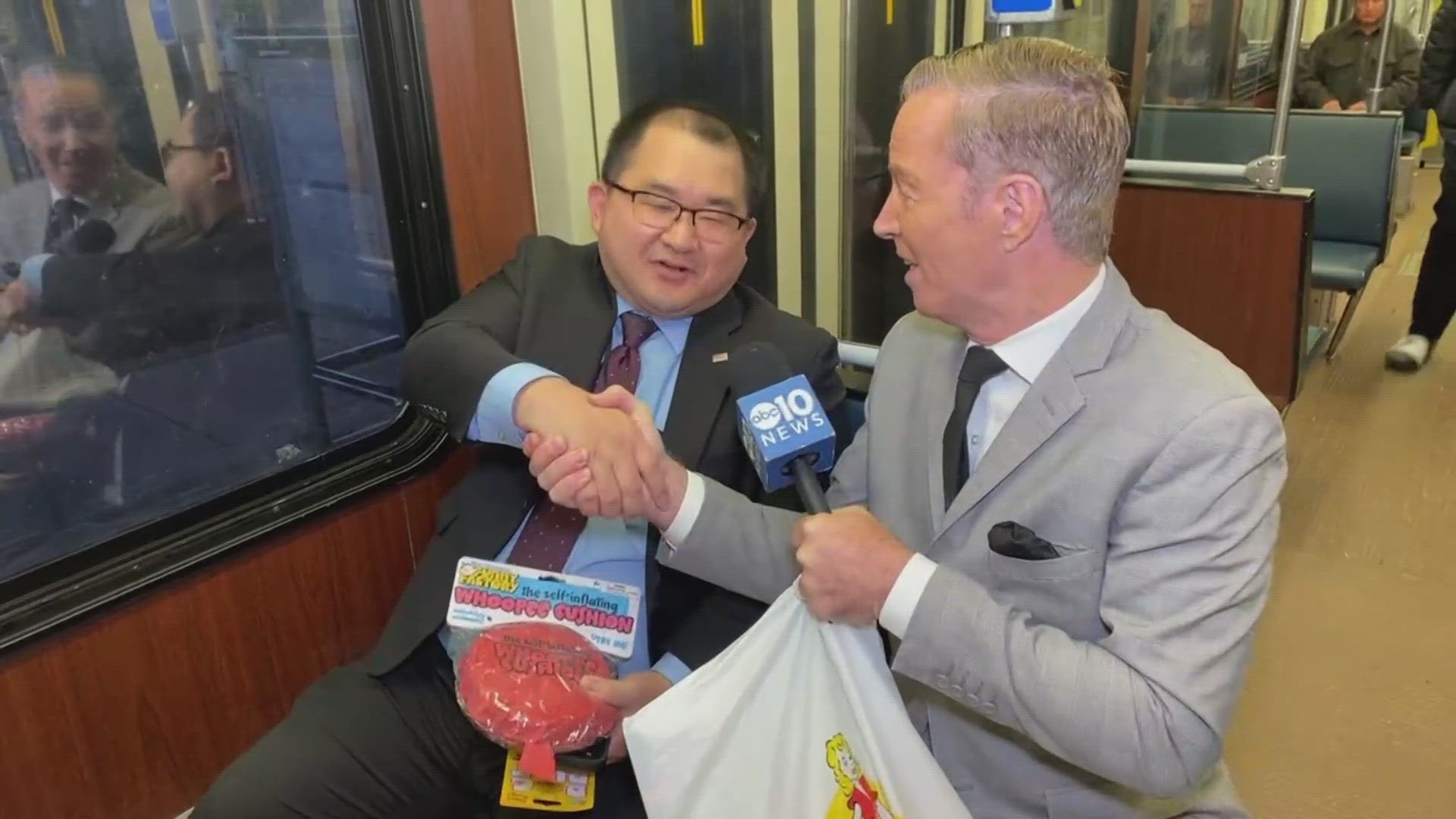Holiday spending this year is expected to be up “modestly,” according to a Gallup poll, despite a drop in consumer spending estimates for November.
A Gallup poll shows that Americans are feeling more cautious about holiday spending than they were in previous months. Estimates dropped from $885 in October to $794 in November. The November estimate is down from their $862 estimate last year around this time.


Despite the drops, the season is still expected to be good for retailers; Gallup considers it “highly unlikely” that retail spending will be lower.
Here’s how the $794 breaks down:
- 32% - Americans planning on spending at least $1,000 on Christmas gifts
- 21% - Americans planning on spending between $500 and $999
- 29% - Americans planning on spending between $100 and $499
- 2% - Americans planning on spending less than $100
About one in 10 of those polled said they will spend nothing, and 6 percent were unsure about the amount they would spend.
In comparison to 2017, here’s how the spending estimates compare:
- 22% - Americans saying the will spend less this year than in 2017
- 59% - Americans saying they will spend about the same amount
- 16% - Americans saying they will spend more


Why did the estimate decline from October?
According to Gallup, the reason behind the estimate decline may be “cold-feet syndrome.” Historically, spending estimates fall by more than $30 between October and November in the poll. This has happened in eight out of the past 11 years.
$91 is still a steep decline. According to Gallup, the only measures that exceed it area $185 drop that occurred in 2008 and a $102 drop in 2009. Both of those drops happened during the 2007 to 2009 recession. Another potential reason for the drop includes stock market volatility.
While the projections for this month were low, Gallup found that it was still on par with or higher than their November projections for most post-recession years since 2009, and estimates for people planning on spending less were still relatively low.



